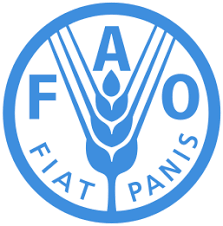Focal point
Location
The Food and Agriculture Organization of the United Nations leads international efforts to defeat hunger. Serving both developed and developing countries, FAO acts as a neutral forum where all nations meet as equals to negotiate agreements and debate policy. FAO is also a source of knowledge and information. We help developing countries and countries in transition modernize and improve agriculture, forestry and fisheries practices and ensure good nutrition for all. Since our founding in 1945, we have focused special attention on developing rural areas, home to 70 percent of the world's poor and hungry people.
Members:
Resources
Displaying 1356 - 1360 of 5074Forty years of community-based forestry: A review of its extent and effectiveness
Community-based forestry (CBF) includes “initiatives, sciences, policies, institutions and processes that are intended to increase the role of local people in governing and managing forest resources” (RECOFTC, 2013). It includes formalized customary and indigenous processes as well as government-led initiatives.
Forty years of community-based forestry: A review of its extent and effectiveness
Community-based forestry (CBF) includes “initiatives, sciences, policies, institutions and processes that are intended to increase the role of local people in governing and managing forest resources” (RECOFTC, 2013). It includes formalized customary and indigenous processes as well as government-led initiatives.
Stocktaking exercise for the project “Increase the use of the VGGT”
The project “Increase the use of the Voluntary Guidelines on Responsible Governance of Tenure of Land, Fisheries and Forests in the Context of National Food Security among CSOs and grassroots organizations” has started in September 2014 thanks to a contribution of the Kingdom of Belgium. Its first phase, ended in December 2015, has involved seven countries: Guatemala, South Africa, Malawi, Myanmar, Niger, Senegal and Nepal.
Land Cover Classification System: Advanced Database Gateway
Advanced Database Gateway The FAO Land Cover Classification System software is due to be released in its third version, and with it come four supporting volumes. The third volume is a tutorial for the use of the Advanced Database Gateway which allows users to better interact with the LCCS and adapt it to their needs. The FAO LCCS is applicable to commercial use, national security, environmental protection, natural resource management, climate change mitigation and tracking of greenhouse gas emissions; and creates land classifications that are internationally transparent and comparable.
Map Accuracy Assessment and Area Estimation: A Practical Guide
Accurate and consistent information on forest area and forest area change is important given the reporting requirements for countries to access results based payments for REDD+ . Forest area change estimates usually provide data on the extent of human activity resulting in emissions (e.g. from deforestation) or removals (e.g. from afforestation), also called activity data (AD). A basic methodological approach to estimate greenhouse gas emissions and removals (IPCC, 2003), is to multiply AD with a coefficient that quantifies emissions per unit ‘activity’ (e.g.








